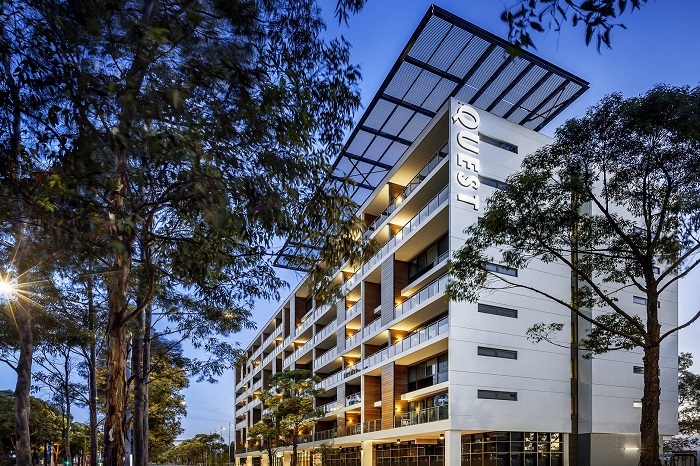Burn injuries can be one of one of the most unpleasant and distressing experiences one can withstand. Whether it's a small kitchen area accident or a severe burn from a mishap, recognizing the stages of burn wound healing is crucial for effective therapy and recovery. In this article, we will dig deep into the complexities of burn injuries, their category, recovery processes, and important treatment techniques.
Understanding Burn Injury Recovery Presents: Recovery Insights
Burns are classified into different levels based on their First Aid Courses in Maroochydore extent, each needing particular clinical attention and care. The healing procedure involves distinctive stages that should be recognized to guarantee proper management and rehabilitation.
What Are the Different Types of Burns?
Burns are usually categorized right into three primary types:
First-Degree Burns: These impact just the external layer of skin (epidermis). Signs and symptoms include redness, mild swelling, and pain.
Second-Degree Burns: These expand into much deeper layers of skin (dermis), causing sores, severe discomfort, and swelling.
Third-Degree Burns: These entail all layers of skin and may harm hidden tissues. They show up white or charred and can be pain-free as a result of nerve damage.
Each kind necessitates differing levels of clinical treatment and home treatment first aid advanced resuscitation strategies.
The Healing Process: An Overview
1. Hemostasis Phase
Immediately after a shed injury occurs, the body launches the hemostasis phase to stop any type of blood loss. Capillary constrict to minimize blood flow to the afflicted location while platelets aggregate to form a clot.
2. Inflammatory Phase
This stage follows hemostasis and usually lasts for 3-5 days post-injury. It involves:
- Increased blood flow to supply immune cells. Swelling as fluids build up in the tissue. Pain as nerve endings end up being sensitized.
3. Proliferative Phase
Taking area from regarding day 3 to week 3 post-burn, this phase consists of:
- Formation of new tissue through collagen deposition. Re-epithelialization where new skin cells migrate throughout the wound bed. Angiogenesis-- the formation of new members vessels-- to provide nutrients to healing tissues.
4. Remodeling Phase
This last phase can last numerous months to years after a burn injury and is noted by:
- Maturation of collagen fibers. Decreased vascularity as structures mature. Potential for scar formation depending on severity.
Importance of Specialized Burn Dressings: Important Burn Products for Home Care
Proper clothing is essential in taking care of melt wounds efficiently at home. Specialized melt dressings offer several functions:
- They shield against infections by developing a barrier versus pathogens. They maintain wetness while permitting gases exchange which is important for healing. Some dressings consist of antimicrobial properties that avoid infection.
It's vital to pick appropriate dressings based upon melt level and dimension. For example, hydrogel dressings are usually suggested for second-degree burns because of their cooling effect.
Scar Administration: Recovering After Significant Burns
Once a melt has actually recovered, scar administration becomes important for restoring function and look:
Silicone Gel Sheets: Applying these aids squash raised marks over time. Massage Therapy: Motivating blood circulation can enhance elasticity in mark tissue. Laser Therapies: Physician may advise these for a lot more extreme scarring cases.Common False impressions Regarding Burn Treatment
CPR Always Restarts Heart Myth: Debunking Common Burn Therapy Misconceptions
One widespread myth bordering mouth-to-mouth resuscitation is that it always reactivates the heart; however, this isn't real-- mouth-to-mouth resuscitation boosts opportunities of survival yet does not assure heart activity returns to immediately after heart attack. Comprehending such mistaken beliefs can aid in supplying exact first aid during emergency situations involving burns or other severe injuries.
FAQs regarding Burn Injury Healing
1. What must I do instantly after sustaining a burn?
Answer: Great the area under running water for at the very least 20 mins and cover it with a tidy fabric or specialized dressing if necessary.
2. How much time does it take for burns to heal?
Answer: Healing times differ by melt level; first-degree burns usually heal within a week while second-degree burns can take up to 3 weeks or more depending upon severity.

3. When should I look for clinical focus for a burn?
Answer: Seek professional help if you have second-degree burns larger than 3 inches or any third-degree burns, regardless of size.
4. Can I use ice directly on a burn?
Answer: No, applying ice directly can trigger further skin damages; use cool (not cold) running water instead.

5. Is there any kind of reliable home remedy for burns?
Answer: Aloe vera gel has relaxing buildings that might assist with small burns yet speak with doctor pertaining to considerable injuries.
6. Exactly how do I recognize if my melt is infected?
Answer: Signs consist of boosted redness, swelling, pus discharge, fever, or aggravating discomfort; seek immediate clinical advice if you think infection.
Conclusion
Understanding melt injury recovery phases is essential not simply for people but likewise caretakers who give assistance throughout recuperation stages. Understanding about specialized therapies-- like specialized dressings-- and proactive mark administration considerably impacts long-term results after significant burns occur.
Through recognition campaigns that emphasize safety around typical risks like campfires or kitchen devices-- such as curling irons-- we can prevent several occurrences before they happen! By recognizing just how to respond with reliable first aid skills (like those instructed in HLTAID012 courses), you equip on your own with useful tools that shield lives during emergencies entailing burns or other serious injuries.

In summary, understanding absolutely is power when taking care of prospective emergency situations connected to burns-- from recognizing therapy methods like chemical or electric burns emergency treatment guidelines down through different child-centric difficulties seen within education setups-- every information matters in ensuring safety!
This comprehensive guide intends not just to inform but also inspire self-confidence in taking care of intricate circumstances properly-- after all-- avoidance integrated with prompt treatment conserves lives!